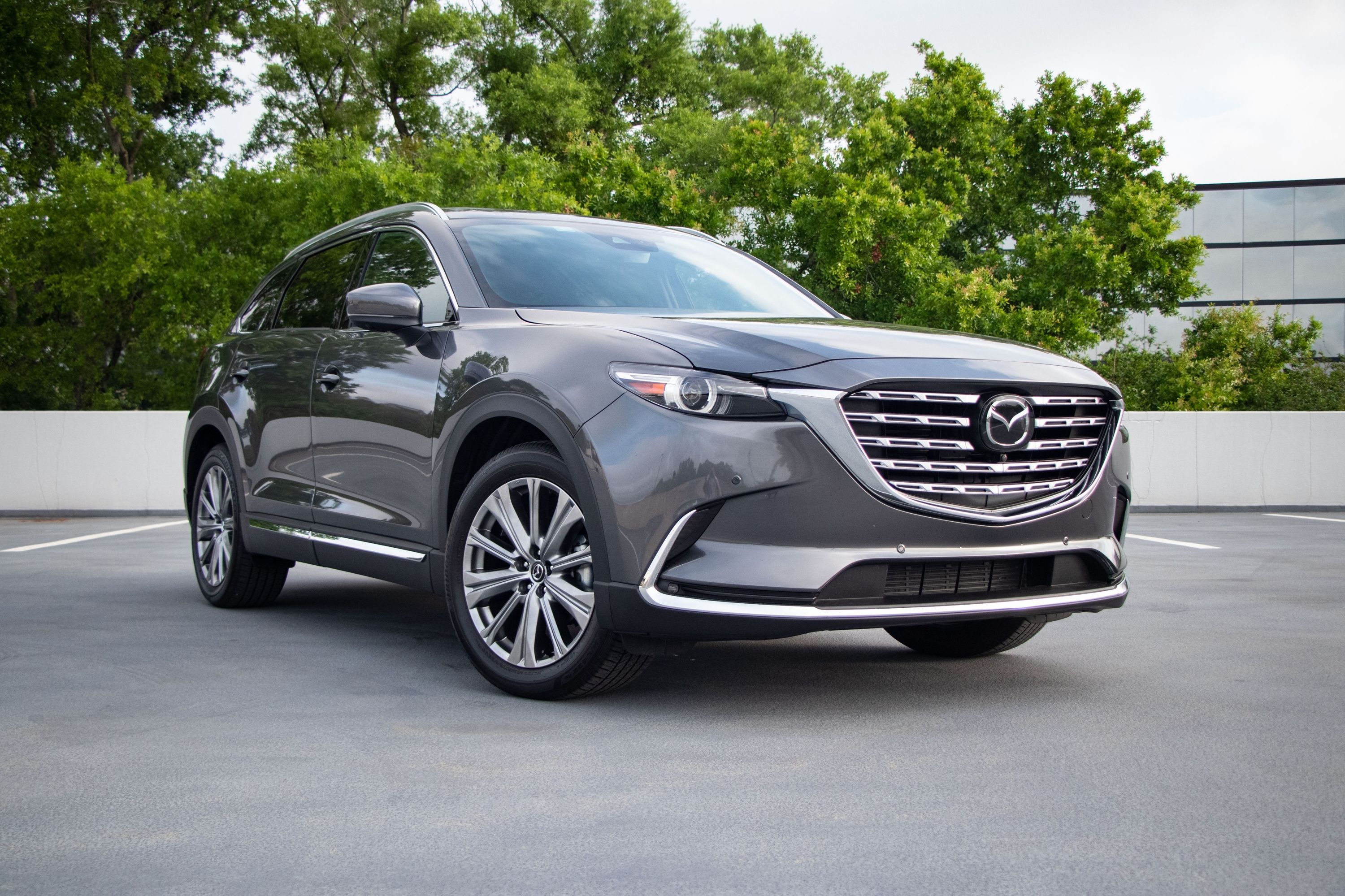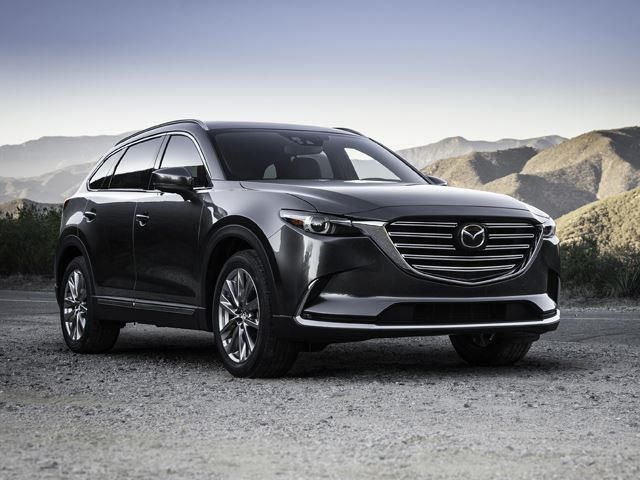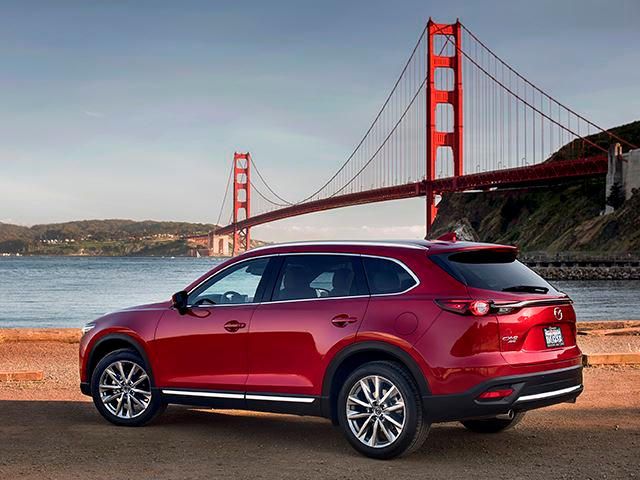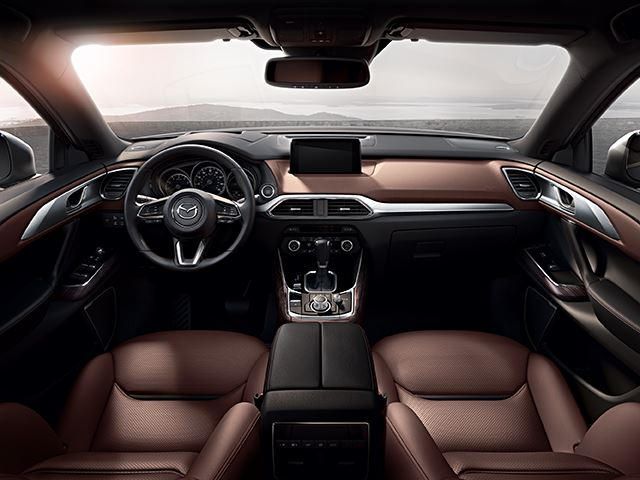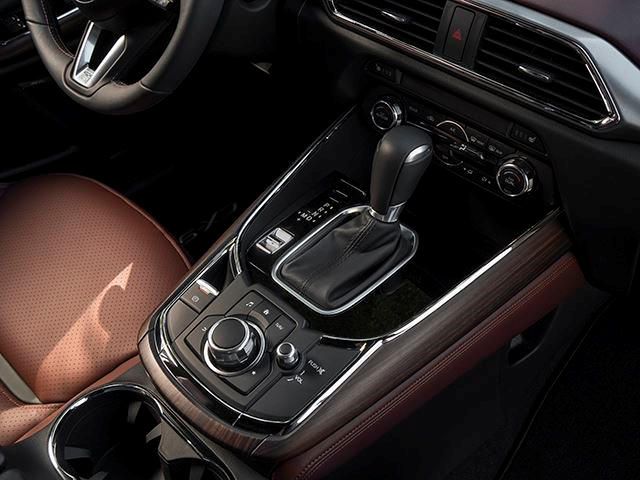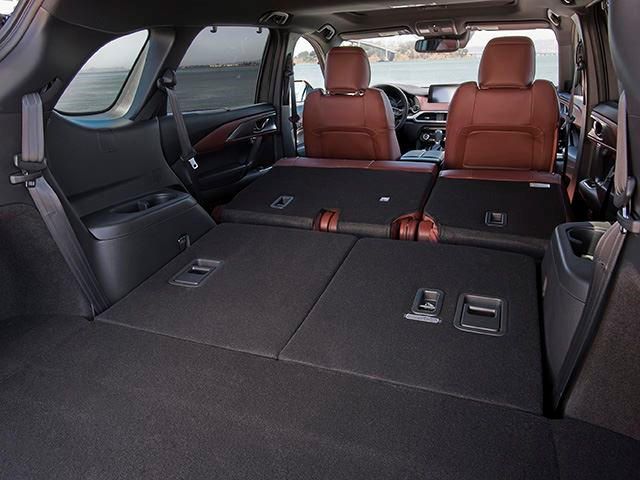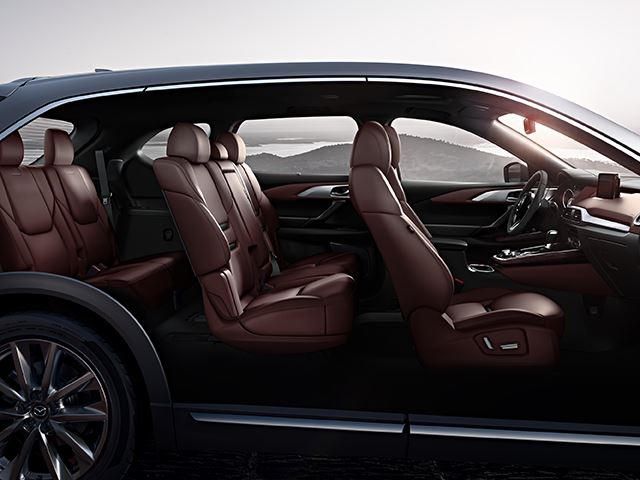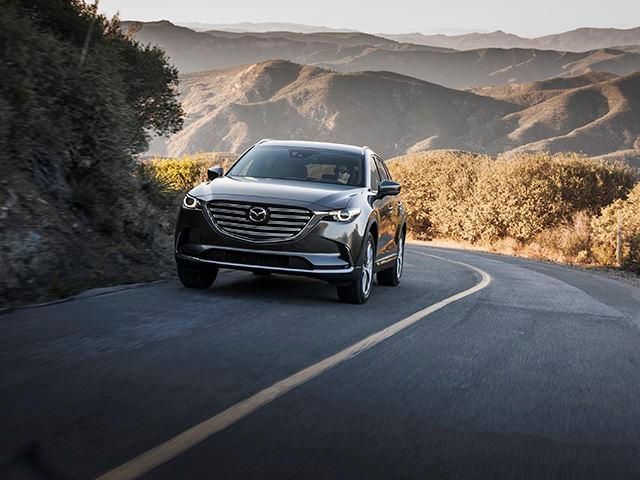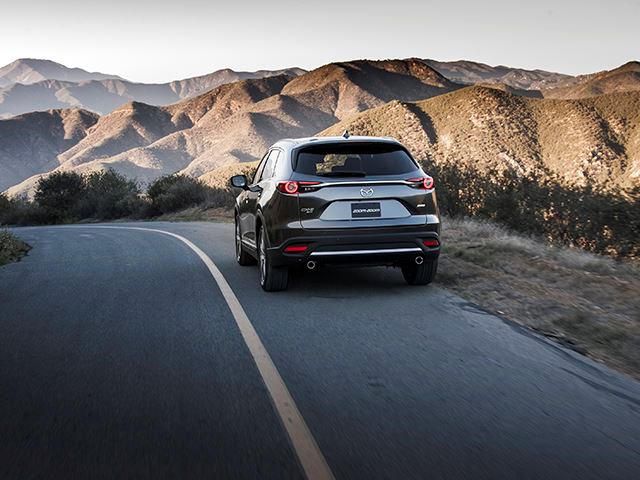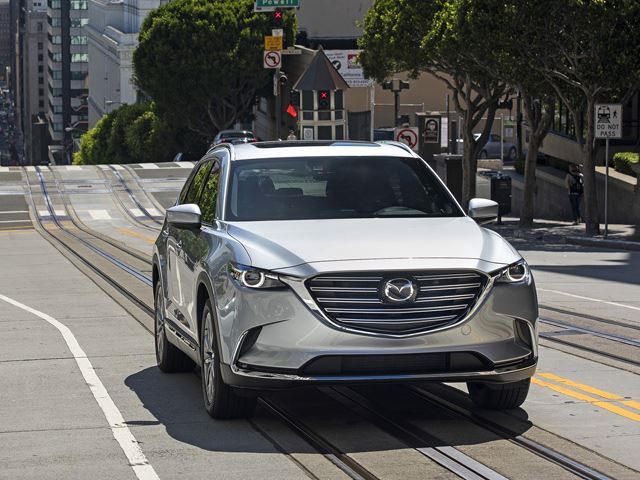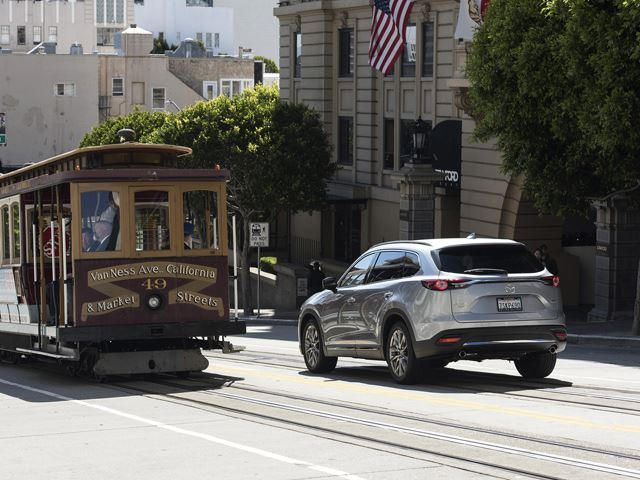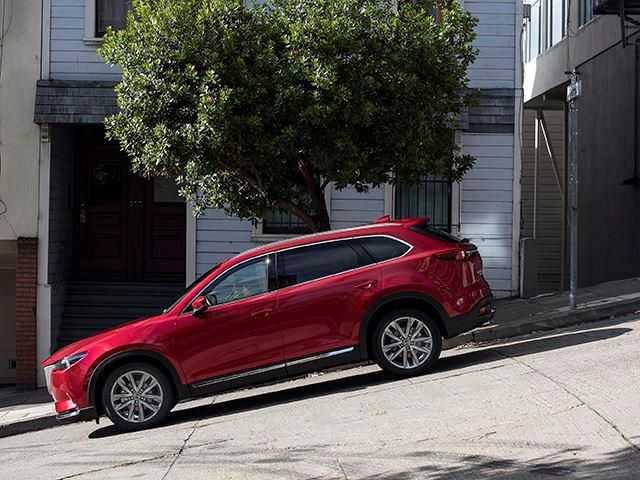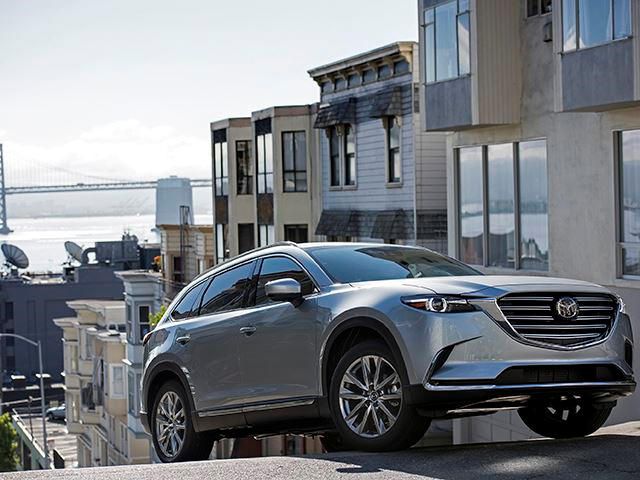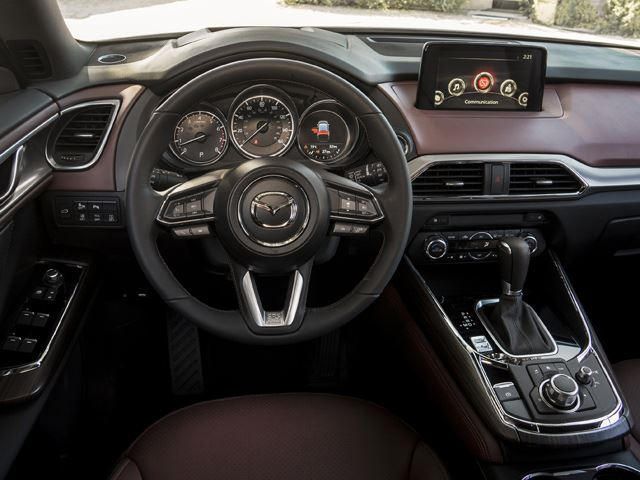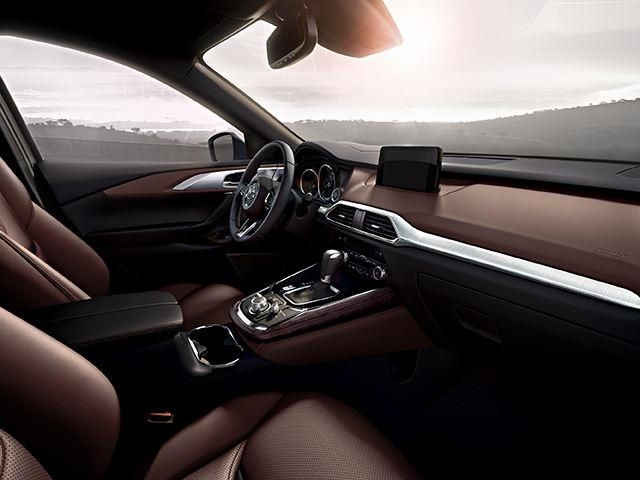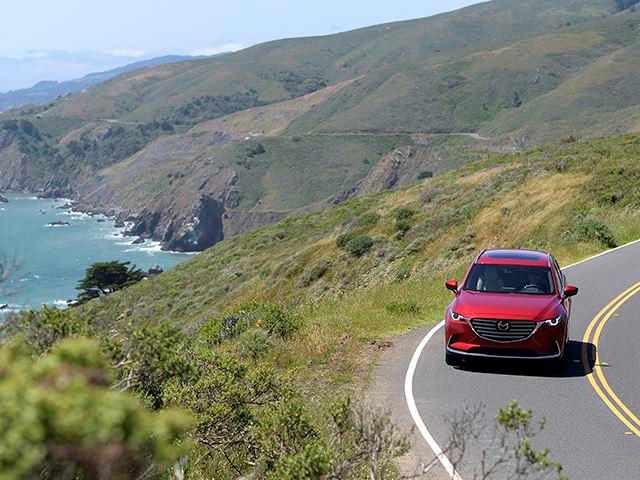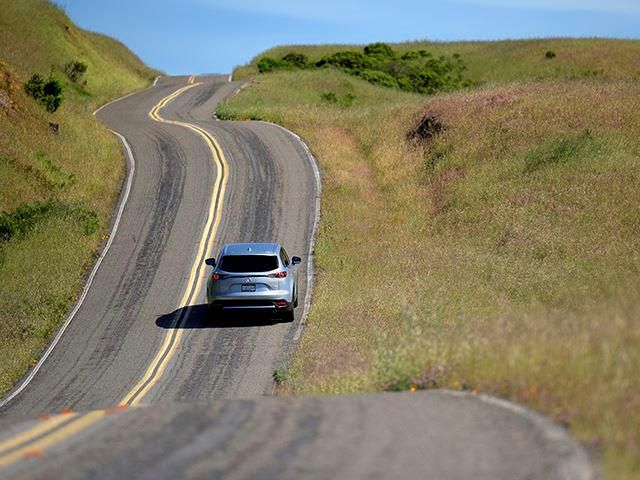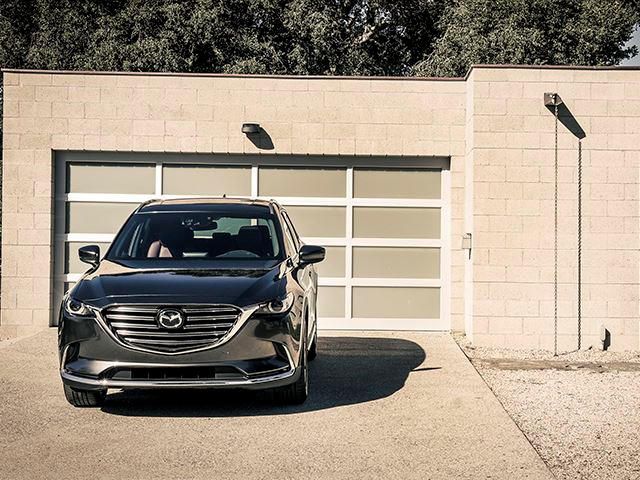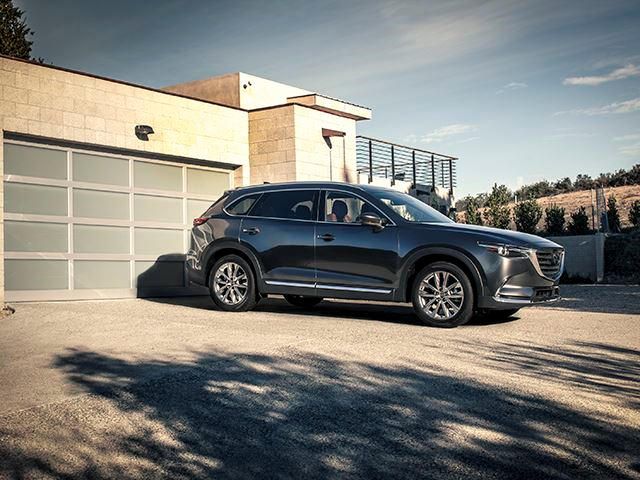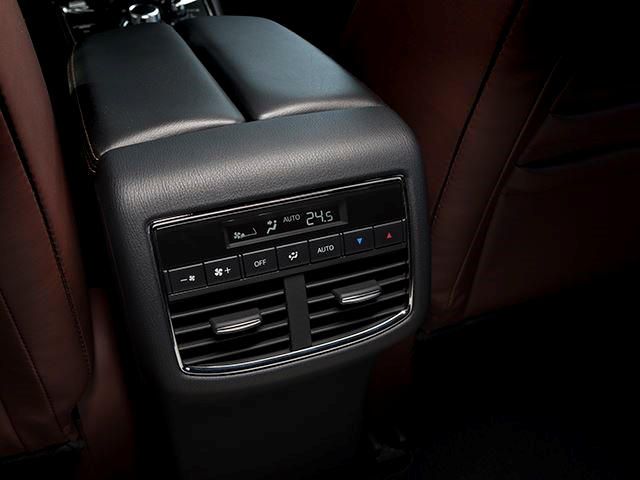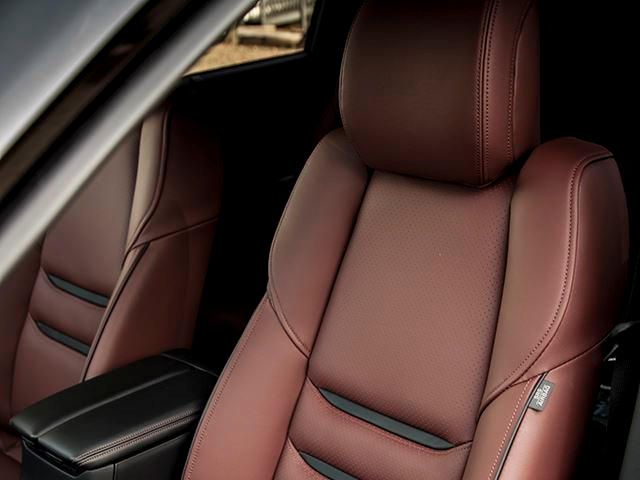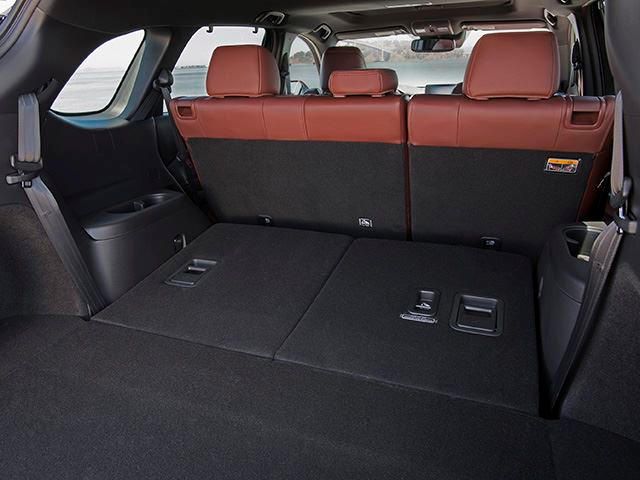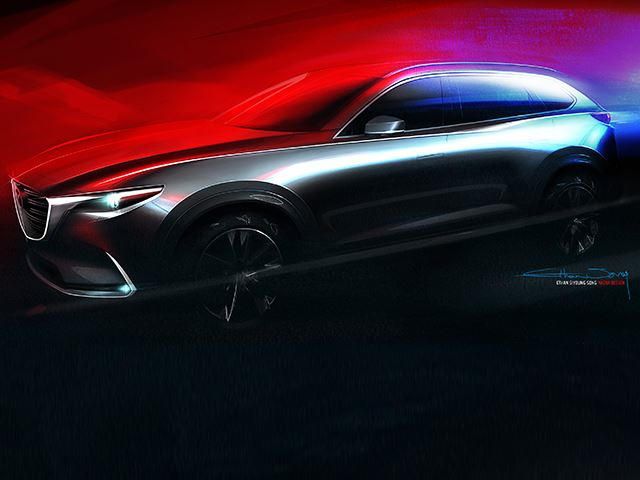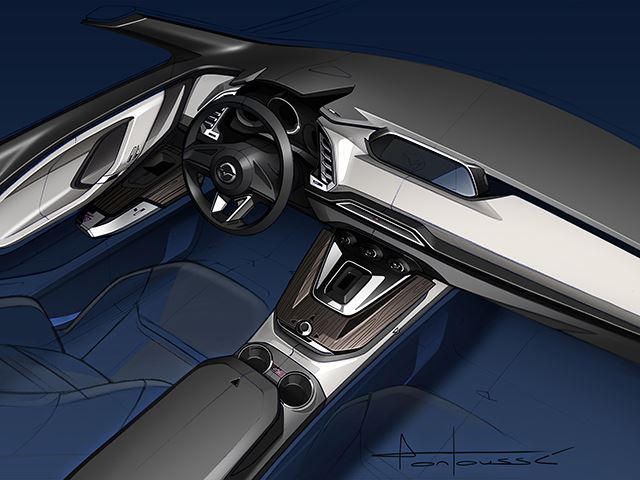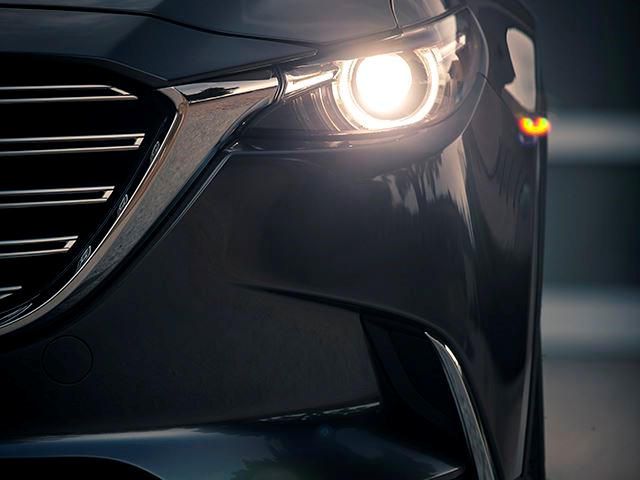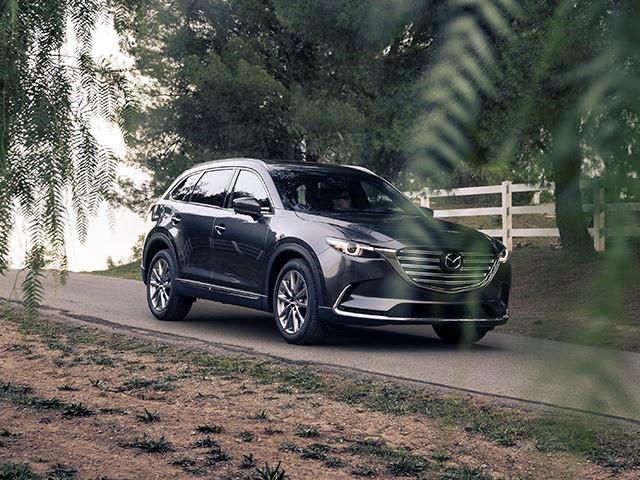2016 Mazda CX-9 First Drive Review: The Luxury Crossover Segment Has A New Player
There's a good reason Mazda only sold 18,048 CX-9s in 2015. The SUV with 3 rows that won North American Truck of the Year in 2008 is the last car in the lineup to get a full Skyactiv makeover. But the '15 suffered for a noble cause, languishing on dealer lots so that the finishing touches could be put on the all-new 2016 CX-9. We were invited to San Francisco-basically next door to our office-for a first drive to see if "driving matters" and "three-row crossover SUV" are mutually exclusive terms.
First off, know that Mazda's new flagship is more about luxury and less about zoom zoom. During the Q&A portion of the media briefing the CX-9's head engineer, Masashi Otsuka, fielded a question about the automaker's desire to move upmarket. His response: Mazda has intentions to punch up but isn't quite ready to execute them yet. Think of the CX-9 as the first step in that direction. The new three-row will be the first Mazda to offer the automaker's new Signature trim. My CX-9 Signature tester stickered at $44,915, although it could hit $50k with options. Having spent an afternoon in a Signature I can say that the interior, the most important part of any luxury car, is well-appointed and well-crafted.
The Auburn Nappa leather is stylish and supple, and I loved the choice of perforated leather over quilted. The wood, rosewood, is sourced from Japan's Fujigen Guitars. Aluminum bisects the dash and rings the center console. All three key materials felt sturdy and looked lovely, giving the cabin an air of quality not seen in any Mazda before. The overall dash design doesn't deviate too much from current Mazda offerings. There's the commander wheel and a 7-inch touch infotainment screen for the Sport and Touring trims and an 8-inch unit for the Grand Touring and Signature. The new 12-speaker sound system was designed with Bose and tuned to create a "Mazda sound," an amalgamation of today's most popular music.
It amplifies the quality of compressed audio, and each test car featured a USB stick pre-loaded with songs. Adele was the best showcase of the system, with her powerful voice coming through the speakers remarkably clear. By Mazda's own estimation the system falls just short of those found in premium German SUVs, but the victory is in coming close without breaking the bank. The sound quality is enhanced by the 53 pounds of sound deadening that sits under the carpet. Outside noise, even on the highway, is kept at bay nicely. The second row offers ample leg and head room for someone over six feet and the fold-down armrest houses two USB ports and climate controls. The third row was cramped but this is a mid-size three-row after all.
The second row seats have a 60/40 split and the third row folds 50/50. There is no awkward slope between the two folded rows but there is a still a gap. With all seats up there's 14.4 cubic feet of cargo space, 38.2 cubic feet with the third row folded and 71.2 cubic feet with both rear rows down. This is down from the 2015, which offered 100.7 cubic feet of total storage space. Towing capacity is rated at 3,500 pounds. While the interior is objectively lovely, I did have some complaints. The butterfly panels on the front armrest looked nice but got annoying after you bumped into them for the hundredth time. Also, ventilated seats and a heated steering wheel should come standard on a $45,000 SUV.
But none of these complaints are deal-breakers. If the 2016 CX-9 is Mazda's warning shot at the luxury segment then it's mission accomplished. The new CX-9 may look long but at 199.4 inches the 2016 model is 1.2 inches shorter than the outgoing 2015 model, but its wheelbase has been extended by 2.2 inches. The five-bar grille is meant to split the car in two: a squat and powerful bottom and a trim and sleek top. The bottom looks well-planted, with the flared fenders and massive wheel wells making the 20-inch tires look almost tiny (18"s come on lower trims). The front and rear overhangs lose 2.3 inches and 1 inch, respectively, giving the CX-9 a coiled up look like a tiger preparing to pounce.
The A-pillars were moved back 3.9 inches to make the hood look longer and more powerful. The 2016 CX-9 is further proof that KODO is one of the industry's best design languages, although the rear end leaves something to be desired. The svelte design flares out a bit too much to accommodate the third row of seats, while the exhaust pipes could do with beefing up a tad. Mazda won't have trouble selling people on the look and cabin of the 2016 CX-9, but the engine may be another story. The only powerplant on offer is a new Skyactiv unit, a 2.5-liter turbo-four. It makes 227 horsepower on 87 octane and 250 horsepower on 93. There's 310 lb-ft of torque and it's fully available at 2000 RPM. The transmission is a six-speed automatic.
This new engine is down on power compared to the 2015 CX-9, which sported a 3.7-liter V6 making 273 hp and 270 lb-ft of torque. The new engine has the most available torque of any base engine in the segment but horsepower is still on the low end when filling the crossover up with regular gas. Rest assured that Mazda knows this and has tweaked the engine accordingly. Mazda's Dynamic Pressure Turbo (DPT) aims to kill turbo lag. The DPT works by routing exhaust gas through smaller ports at lower engine speeds, akin to putting your finger over the nozzle of a slow-running garden hose. This allows the turbocharger to quickly spool up and make up to 17.4 psi of boost.
The DPT is said to be 20-25% more effective than a twin-scroll turbo under 1500 RPM. When the revs climb secondary ports are opened to allow more exhaust gas through. To increase the turbo's efficiency a 4-3-1 exhaust setup was used. Cylinders No. 1 and No. 4 have separate exhaust ports, with cylinders No.2 and No.3 sharing a port. This allows an exhaust pulse to arrive every 180 degrees of crankshaft rotation, keeps pulses separate and scavenges excess exhaust gas. To save fuel there's a cooled exhaust gas recirculation (EGR) system that lowers exhaust temperatures by up to 212 degrees F, with cooled air making up as much as 15% of the fuel mixture.
All this Skyactiv efficiency leads to fuel economy ratings of 22/28/25 mpg (FWD) and 21/27/23 mpg (AWD). Mazda said it "never focused on the numbers that appear in the catalog" when developing its new engine. Cool line in a press release, bro. But how does it work in the real world? Off the line there's some giddy-up, with the 310 lb-ft of torque kicking in promptly to make merging onto the freeway or beating a red light easier. Turbo lag isn't much of an issue, but the CX-9 just doesn't feel fast. The FWD model is down 198 pounds (4,054 curb weight) and the AWD model lost 287 pounds (4,301 curb weight). But like most Mazdas the CX-9 is designed to be at its best on serpentine roads.
Our drive route ran north up the iconic 1 Highway and included plenty of lonely and curvy roads cut into the Northern California countryside. With the transmission in Sport and the shifter set to manual the CX-9 was a joy to drive, effortlessly diving into corners with a grace and stability not found on most three-row crossovers. The body dips just slightly heading into turns to level off body roll. The Signature trim comes standard with AWD, and Mazda designed the system to detect and correct slip before the driver notices it. The system couldn't dupe a lead-footed reviewer but should do fine when a normal driver is behind the wheel. The AWD system can also route up to 50% of the engine's power to the rear wheels to limit understeer.
The brakes are carryovers from the 2015 CX-9, with 12.6-inch ventilated discs up front and 12.8 solid discs in back and the suspension is stiff yet forgiving. I drove over many potholes and bumps in the road and never felt rocked once. A heads-up display, beamed onto the windshield as opposed to the pop-up unit in other Mazdas, lets you see everything from your speed and tach to turn-by-turn directions and the road's speed limit. It's great for those times when you don't want to take your eyes off the road to see if your right foot is breaking the law. The safety features are mostly carryovers, although Lane Keep Assist is a Mazda first. It's designed to ease the car into turns, not keep it between defined lane lines.
The Lane Departure Warning takes a passive approach, vibrating the steering wheel to let the driver know the car is drifting. Perhaps the coolest safety feature isn't a piece of tech at all but the fact that the front passenger side mirror is spaced out from the A-pillar. This gap allows the driver to spot smaller pedestrians in what is normally a blind spot. Overall I enjoyed my limited time behind the wheel and wasn't bothered by the four-cylinder under the hood. The steering was a bit too numb, though, and paddle shifters would have been nice, even if they do run counter to Mazda's new and more "mature" image. However, I am concerned about how the 2016 CX-9 will move once it's loaded with seven people and some cargo.
2015 was Mazda's best US sales year in two decades. But of the record 17.4 million cars sold, only 2% were Mazdas. The 2016 CX-9 is pegged at 50,000 sales/year, with 80% of those going to North America, and the company is banking on American buyers opting for mid-level and top trims. The CX-9 Sport starts at $32,420, and the Touring and Grand Touring trims go for $36,870 and $41,070 respectively. I'm most interested in the $45,000 Signature trim, though, as it's a litmus test of sorts. Is the public really ready for Mazda to move upmarket? I think the answer is yes, but Mazda's marketing team will have to get creative.
Selling people on the gorgeous look of the CX-9 and its plush interior won't be tough. What will be hard is convincing a consumer to part with $45,000 for a mid-size three-row crossover SUV that doesn't offer the segment's standard V6 powerplant. Hopefully the team that made the epic "Driving Matters" ad is still on staff.

